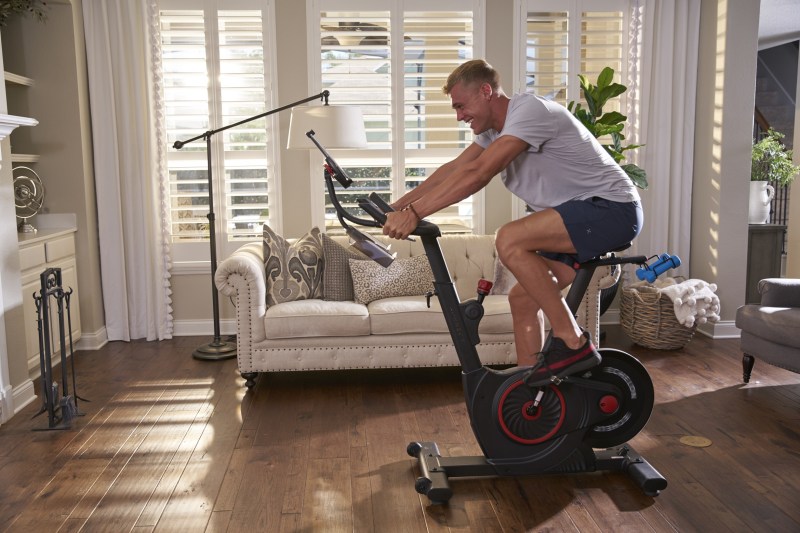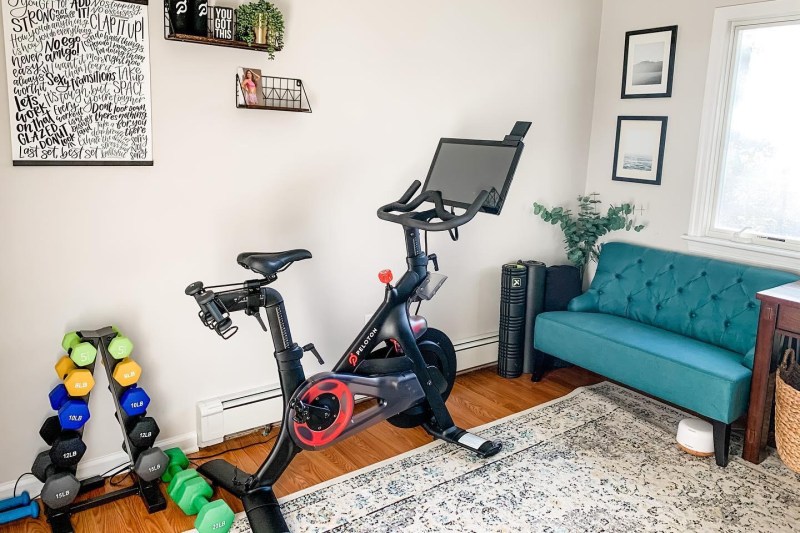Whether you are a new indoor cyclist or you’ve been riding inside for many years, buying an at-home indoor bike is an investment in your health and your home gym. But before you impulse buy a Peloton and join the vast community of those who love the brand, it’s worth looking into the various Peloton alternatives out there. After all, Echelon manufactures a number of bike models that continue to be one of Peloton’s biggest competitors.
There are a number of factors to consider when evaluating each of the brands of indoor exercise bikes. The first is the bike setup itself as well as the pedal system the bike comes equipped with. Other considerations include the screen and class subscription services for each bike. Finally, the price of the bike as well as the options that are available are important to consider. Some bikes have an extra fee or price to upgrade things like the screen size or even the type of pedals that are used. Fortunately, we’ve mapped out all of the pros and cons that each bike presents.
Bike Setups
Peloton bikes have a slightly smaller frame that measures 48″ by 24″ and the bike does get delivered and set up in your home for a hassle-free experience. You can ride the same day it gets dropped off. They’ll even pick it up for you if you decide the Peloton isn’t for you after giving it a 30-day trial. The original bike weighs 135 pounds while the Bike+ model is slightly heavier at 140 pounds.
The steel-framed bike is compact so it won’t take up too much space in your home, but it also features sleek and clean lines. Peloton bikes are also very quiet thanks to their belt drive so you can ride anytime without the worry of disturbing anyone else at home. Each of the sturdy models can hold riders who weigh up to 305 pounds. Peloton bikes rely on 100 levels of gradual resistance which means you can add resistance seamlessly.

Echelon bikes
Most Echelon bike models weigh between 105 pounds and 124 pounds and can accommodate riders up to 300 pounds. These bikes are also made with high-quality steel frames with a sleek design that easily rivals Peloton. As for the resistance system, Echelon uses a 32-level magnetic resistance on a step system. So, it won’t be quite as smooth as a Peloton when it’s time to add weight, but magnetic resistance is very popular and requires little maintenance over time.
Neither of the bikes comes with free weights, but both companies offer them for purchase. Peloton’s weight set costs $25 while Echelon’s is $20
Pedal Systems
Those new to cycling might not realize just how important clipping in is, but it can really improve your performance and help you train harder. If you really become a cycling junkie, you might even reach a day when a ride almost isn’t worth it if you can’t clip in. There are generally two systems to choose from, and each brand uses a different system.
Peloton uses Delta-compatible pedals and customers can buy shoes to clip in from Peloton for $125. If you already have and love another system like SPD, from riding on the road, you can buy spin shoe converters for $25 to swap out under your shoes. You can also put your own pedals on easily with a pedal wrench.
Echelon utilizes the SPD system
Handlebar Screens
As for the high-definition touchscreens that are built in over the handlebars, there is only a half-inch difference between Peloton’s bikes and Echelon’s EX-5S model. Peloton’s screen is 22 inches while Echelon’s EX-5S is 21.5 inches. The Echelon screen does turn 180-degrees so you can easily see the screen while completing cross-training exercise classes.
While the sheer size of the screen on Peloton bikes helps people feel more immersed in a class, many Echelon bikes only offer a table mount. So, that means you need to bring your own screen to the bike unless you buy the EX-5S model which includes the 21.5-inch screen. Both brands offer leaderboards and metrics on the screens during classes as well.
Class Subscriptions
Peloton continues to edge out Echelon in terms of the quality of the streaming subscription that is offered. Peloton makes up to 14 live spin classes available each day alongside their extensive catalog of on-demand classes. Peloton’s classes are also known for making riders feel like they are in the studio even from their homes. You can even filter classes by a number of features such as the type of music, the difficulty level or even the length of time.
Echelon also offers a number of live classes each day as well as on-demand workouts. However, there are some glitches that many riders have complained about as well as the app crashing from time to time. So, if you aren’t prepared to handle technical difficulties in stride, this is certainly something to consider. Echelon also allows you to filter classes by instructor or length of time as well.
Both subscription services are $39 per month. Though the price point is the same, Echelon’s classes
Total Price Points
Peloton bikes cost $2,245 outright plus the monthly $39 subscription or $2,262 if you finance which covers both the bike and an annual subscription. That is just $58 per month for 39 months.
Echelon’s EX-5S bike
Both bikes come with a one-year warranty as well. Those who can buy outright and are equipped to deal with the digital issues can get a great deal on an at-home bike with the Echelon EX-5S. But for those who seek a premium bike with top-notch class options, the Peloton is the better option. Should you need to finance and are approved by the company, Peloton still wins out as the Echelon financing option totals a higher monthly price than Peloton’s outright or financed options.



